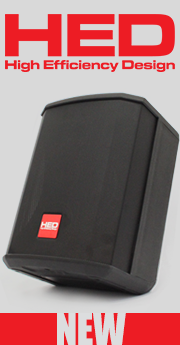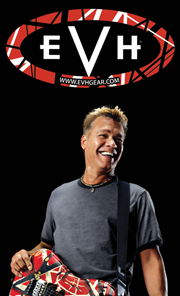Search
Current Category
YAMAHA STUDIO&PA
32-Channel Consoles 40-Channel Consoles Accessories for Mixers Accessory Cases Accus, Batteries and Charging sets Active Nearfield Monitors Active Subwoofers Complete Sound Systems Covers for Loudspeakers Covers for Loudspeakers Digital Audio Multicore Units Digital Mixing Desks Full-Range Active Loudspeakers Full-Range Passive Loudspeakers Headphone Preamps Headphones for Keys Misc. Studio Gear Other Installation Accessories Passive Stage Monitors (PA) Passive Subwoofers Power Amps. 850-2000 Watt (4 ohm) Power Amps. 2000 W or More (4 ohm) Power Amps. Up To 300 W (4 ohm) Powered Mixiers Standard Mixing Desks Studio Headphones Subwoofer USB/Firewire Mixers
32-Channel Consoles 40-Channel Consoles Accessories for Mixers Accessory Cases Accus, Batteries and Charging sets Active Nearfield Monitors Active Subwoofers Complete Sound Systems Covers for Loudspeakers Covers for Loudspeakers Digital Audio Multicore Units Digital Mixing Desks Full-Range Active Loudspeakers Full-Range Passive Loudspeakers Headphone Preamps Headphones for Keys Misc. Studio Gear Other Installation Accessories Passive Stage Monitors (PA) Passive Subwoofers Power Amps. 850-2000 Watt (4 ohm) Power Amps. 2000 W or More (4 ohm) Power Amps. Up To 300 W (4 ohm) Powered Mixiers Standard Mixing Desks Studio Headphones Subwoofer USB/Firewire Mixers
Category
Manifacturer
Home
» YAMAHA STUDIO&PA
» QL1
YAMAHA STUDIO&PA QL1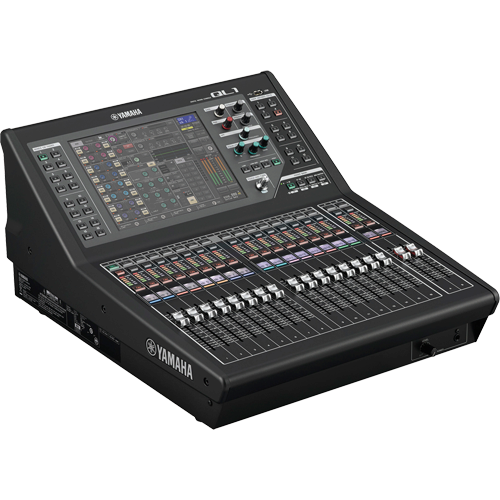

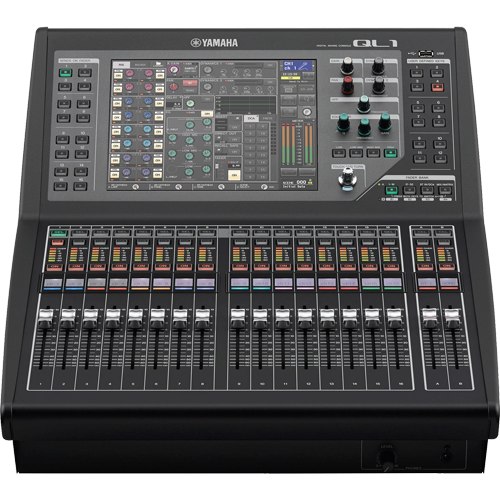
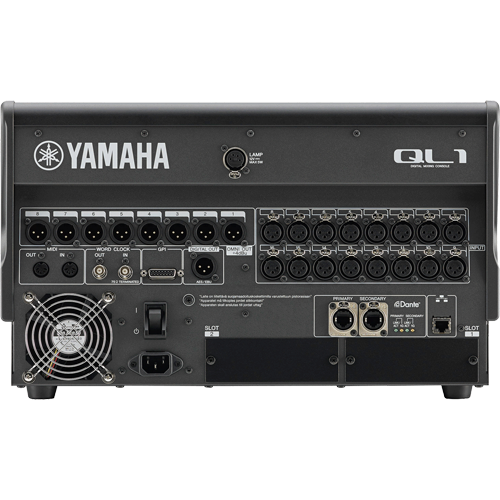














Features:
16 + 2 fader configuration in a compact, rack mountable unit.
• Mix channels: 32 mono, 8 stereo.
• Busses: 16 mix, 8 matrix (Input to Matrix supported).
• Local I/O: 16 in, 8 out.
• Fader configuration: 16 + 2 (Master).
• Rack mountable with optional RK1 Rack Mount Kit.
It All Begins with Natural Sound
In order to take maximum advantage of evolved processing potential to sculpt creative new soundscapes, the engineer must have uncolored, natural sound as a starting point. Yamaha’s unwavering natural sound philosophy is fully implemented in the QL series, resulting in accurate reproduction that is faithful to the source.
Every Component Contributes to Superior Sonic Precision
Full creative freedom can only be achieved when the sonic foundation is accurate, uncolored, and faithful to the source. The same pure, natural sound that is a highly regarded feature of the CL series is achieved in the compact QL series consoles as well. Every detail, from mechanical construction through port location, power supply, grounding, and individual components has been painstakingly analyzed and brought together in a system that affords extraordinary audio quality. Noise that can affect digital mixer performance in a number of ways has also been thoroughly scrutinized and effectively eliminated. Because it can affect AD/ DA converter performance, system clock jitter has been subject to detailed analysis and optimized by revising the internal FPGA layout and rerouting the clock signal. All of these details combine to realize performance that not only passes the strictest scientific tests, but also satisfies the critical ears of some of the most demanding sound engineers in the business.
Keeping the Legacy Alive
When it’s time to build creatively on the uncolored sonic foundation provided by the QL consoles, a selection of powerful processors is ready to refine your sound. Yamaha digital technology accurately reproduces the quality and performance of time-honored analog devices that are renowned for their musical sound, as well as speech mixing technology that revolutionized the industry with unprecedented consistency and clarity. The technology that achieves all of this reflects Yamaha’s respect for the legacy of masters who have given us some of our most valued audio capabilities. It also gives today’s sound engineers the support they need to create for the future.
VCM Technology and Rupert Neve
All of the processing capability that was packed into the CL series consoles is provided in the QL consoles as well. Most of those processors are based on Virtual Circuit Modeling (VCM) technology developed by “Dr. K” (Toshifumi Kunimoto) and his team at “K’s lab,” Yamaha’s stateof-the-art digital technology research facility. VCM technology precisely models the circuitry and performance of analog audio devices, right down to the characteristics of individual components such as resistors and capacitors. VCM simulations are so realistic and musical that even the legendary Rupert Neve, a master who built his reputation on analog sound, has given it his approval and collaborated in developing VCM versions of his Portico 5033 and 5043 EQ and compressor, both provided as on-board processors in the QL consoles.
Revolutionary Dan Dugan Automatic Mixer Built In
hanks to in-depth collaboration with Dan Dugan Sound Design, renowned Dan Dugan automatic microphone mixing with its advanced algorithms is built into the QL series consoles. Setup is easy: just insert the processor into up to 16 channels for automatically optimized microphone gain distribution. Gain control is smooth and natural, as though experienced human operators were doing the mix. The system also effectively reduces feedback and comb filter issues. For speech applications, especially non-scripted situations, this allows the operator to concentrate on details other than fader operation for consistently high-quality mixes
• Mix channels: 32 mono, 8 stereo.
• Busses: 16 mix, 8 matrix (Input to Matrix supported).
• Local I/O: 16 in, 8 out.
• Fader configuration: 16 + 2 (Master).
• Rack mountable with optional RK1 Rack Mount Kit.
It All Begins with Natural Sound
In order to take maximum advantage of evolved processing potential to sculpt creative new soundscapes, the engineer must have uncolored, natural sound as a starting point. Yamaha’s unwavering natural sound philosophy is fully implemented in the QL series, resulting in accurate reproduction that is faithful to the source.
Every Component Contributes to Superior Sonic Precision
Full creative freedom can only be achieved when the sonic foundation is accurate, uncolored, and faithful to the source. The same pure, natural sound that is a highly regarded feature of the CL series is achieved in the compact QL series consoles as well. Every detail, from mechanical construction through port location, power supply, grounding, and individual components has been painstakingly analyzed and brought together in a system that affords extraordinary audio quality. Noise that can affect digital mixer performance in a number of ways has also been thoroughly scrutinized and effectively eliminated. Because it can affect AD/ DA converter performance, system clock jitter has been subject to detailed analysis and optimized by revising the internal FPGA layout and rerouting the clock signal. All of these details combine to realize performance that not only passes the strictest scientific tests, but also satisfies the critical ears of some of the most demanding sound engineers in the business.
Keeping the Legacy Alive
When it’s time to build creatively on the uncolored sonic foundation provided by the QL consoles, a selection of powerful processors is ready to refine your sound. Yamaha digital technology accurately reproduces the quality and performance of time-honored analog devices that are renowned for their musical sound, as well as speech mixing technology that revolutionized the industry with unprecedented consistency and clarity. The technology that achieves all of this reflects Yamaha’s respect for the legacy of masters who have given us some of our most valued audio capabilities. It also gives today’s sound engineers the support they need to create for the future.
VCM Technology and Rupert Neve
All of the processing capability that was packed into the CL series consoles is provided in the QL consoles as well. Most of those processors are based on Virtual Circuit Modeling (VCM) technology developed by “Dr. K” (Toshifumi Kunimoto) and his team at “K’s lab,” Yamaha’s stateof-the-art digital technology research facility. VCM technology precisely models the circuitry and performance of analog audio devices, right down to the characteristics of individual components such as resistors and capacitors. VCM simulations are so realistic and musical that even the legendary Rupert Neve, a master who built his reputation on analog sound, has given it his approval and collaborated in developing VCM versions of his Portico 5033 and 5043 EQ and compressor, both provided as on-board processors in the QL consoles.
Revolutionary Dan Dugan Automatic Mixer Built In
hanks to in-depth collaboration with Dan Dugan Sound Design, renowned Dan Dugan automatic microphone mixing with its advanced algorithms is built into the QL series consoles. Setup is easy: just insert the processor into up to 16 channels for automatically optimized microphone gain distribution. Gain control is smooth and natural, as though experienced human operators were doing the mix. The system also effectively reduces feedback and comb filter issues. For speech applications, especially non-scripted situations, this allows the operator to concentrate on details other than fader operation for consistently high-quality mixes
Our Price









BUY NOW!
Availability of this item:
In Stock
In Stock

Warranty: 24 months
Продуктът е наличен в
• София, Централен склад бул. "Проф. Цветан Лазаров" 74А
Useful links:
Availability info:
![]() - In stock
- In stock
![]() - 2 - 5 days
- 2 - 5 days
![]() - Limited Qty. Available
- Limited Qty. Available
![]() - Not available *
- Not available *
![]() - Discontinued
- Discontinued
* On request
Help Desk
Advisers

OPERATOR:
"Music World” Ltd
VAT № BG 205686014
7, Iskarsko Chausee blvd.
1528, Sofia, Bulgaria,
info@musicworld.bg
Page generated in 6.16 seconds






